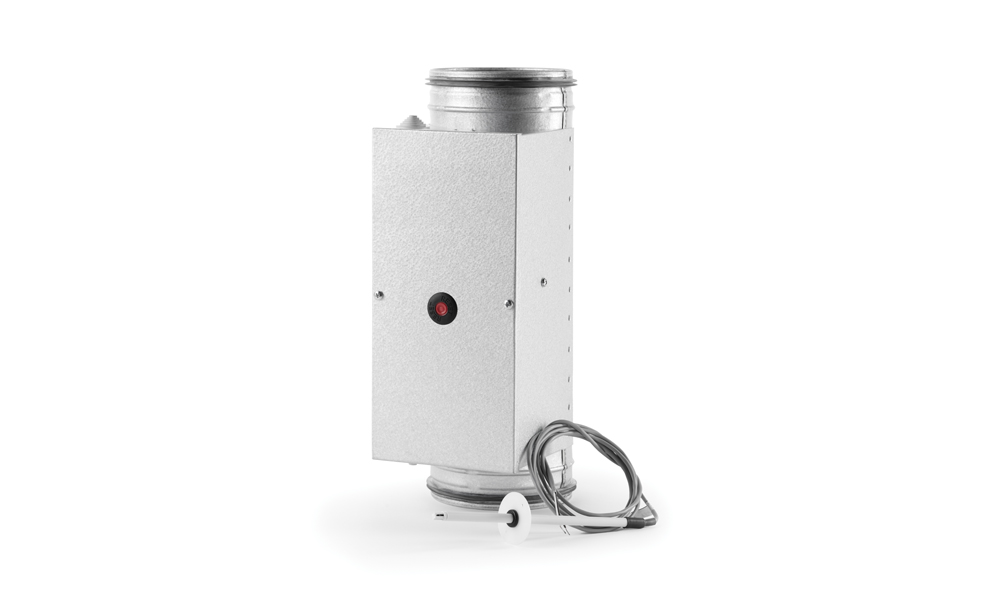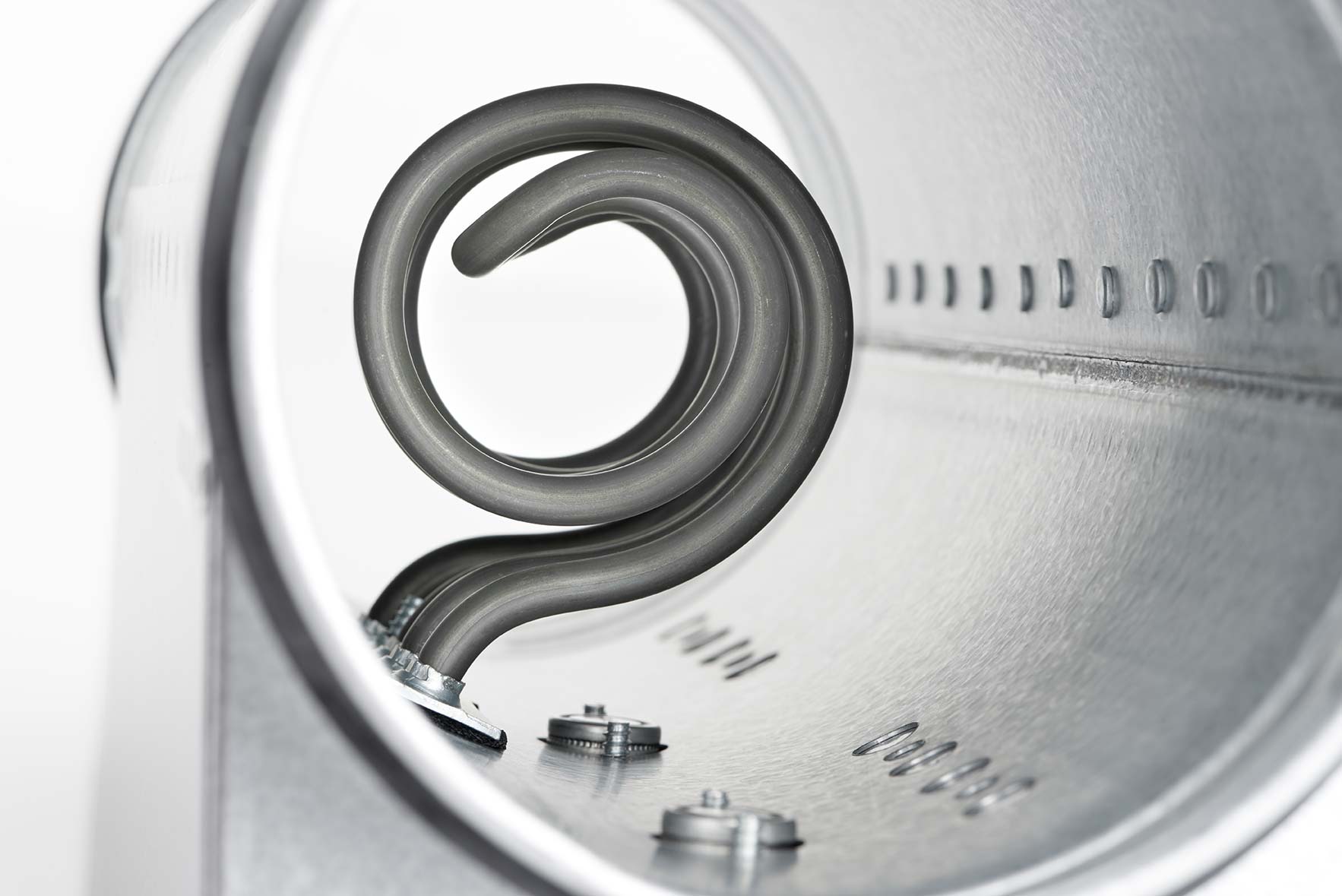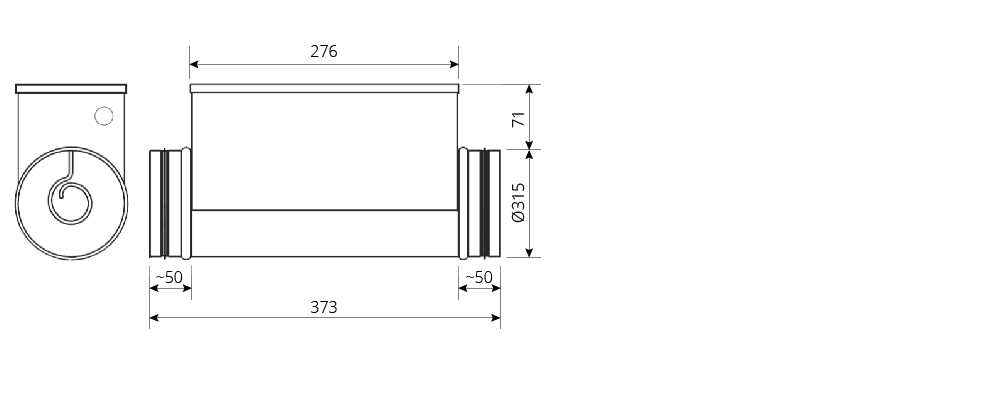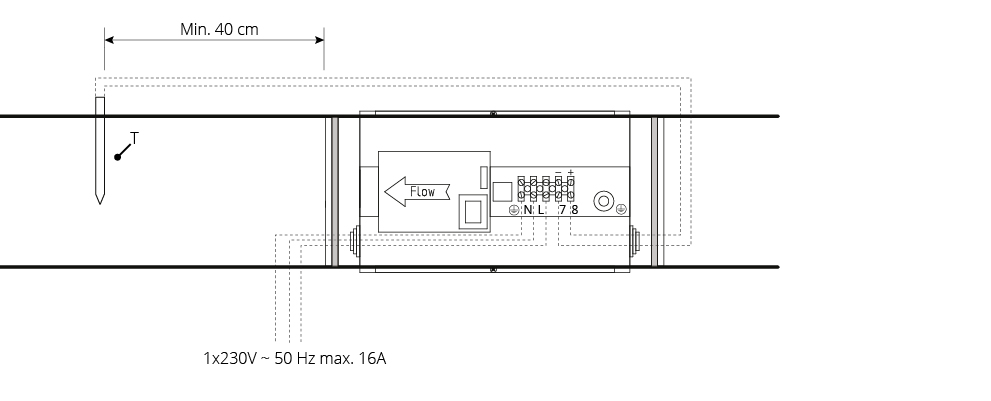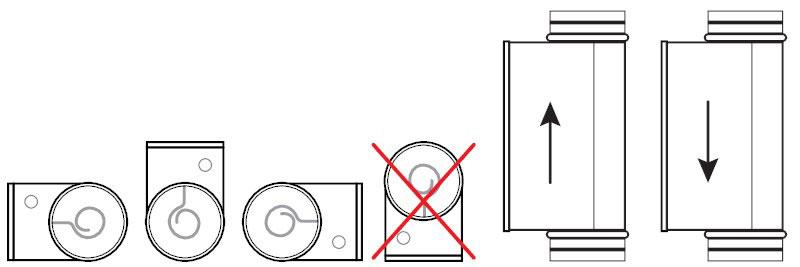Pre-heating element for frost protection Ø315 - 6000W
If the unit has a high-efficiency counterflow heat exchanger (heat exchanger), ice may form in the exchanger during periods of cold weather. This will result in reduced heat recovery and potentially cause a draught in the dwelling at night.
In order to prevent icing of the counterflow heat exchanger during cold periods, it is recommended that you install a pre-heating element for frost protection before the unit. The pre-heating element ensures that the outdoor temperature does not fall below -3 ºC. It regulates in steps to avoid unnecessary energy consumption.
|
Calculation of correct pre-heating element: Δt * air density * air volume [m3/h] e.g.: The pre-heating element must give frost protection down to -15°C and the air volume is m3/h. 15 * 0,34 * 100 = 510W In the table below we have calculated the energy consumption when using a pre-heating element for frost protection. The calculations clearly show that it is worth using energy on frost protection because you achieve an overall reduction in energy consumption.
*Average for apartment |
||||||||||||||||||||||
|
It is important that the temperature sensor is placed at least 25 cm from the pre-heating element in order to achieve efficient regulation. ATTENTION! The heating element must be insulated with a fire retardant insulation material. The cover of the connection box, however, must not be insulated
Positioning options:
|
